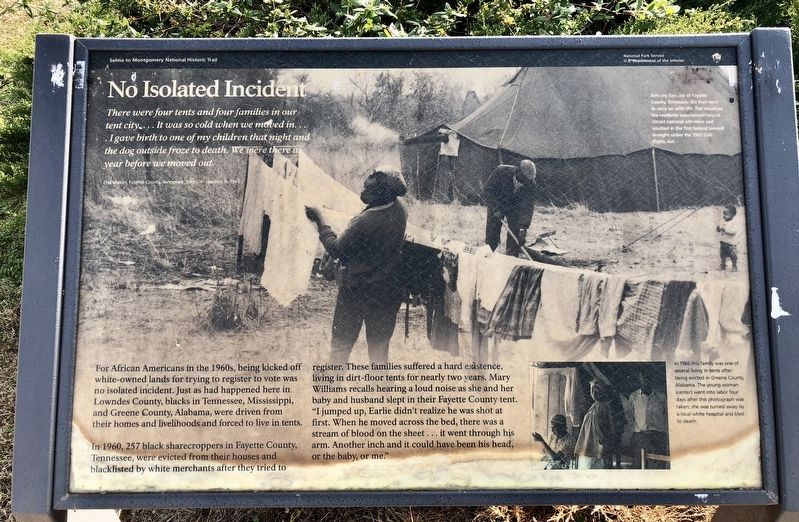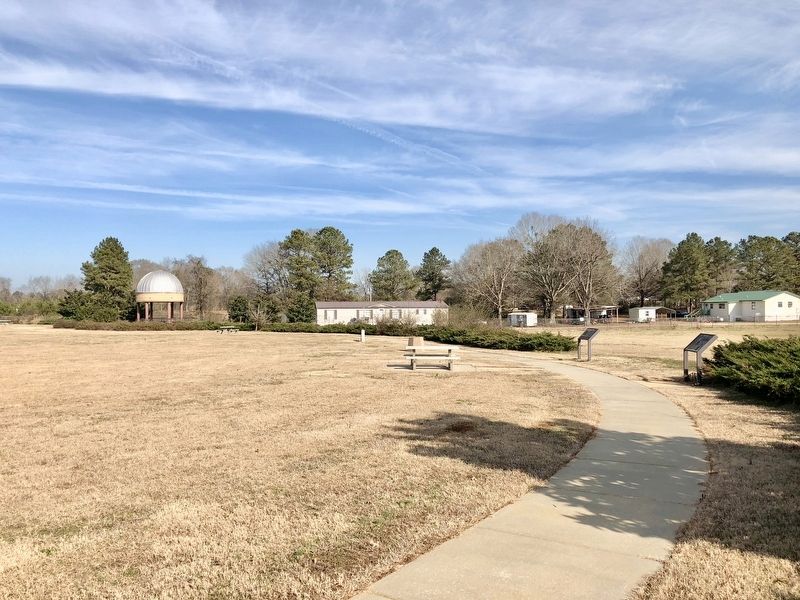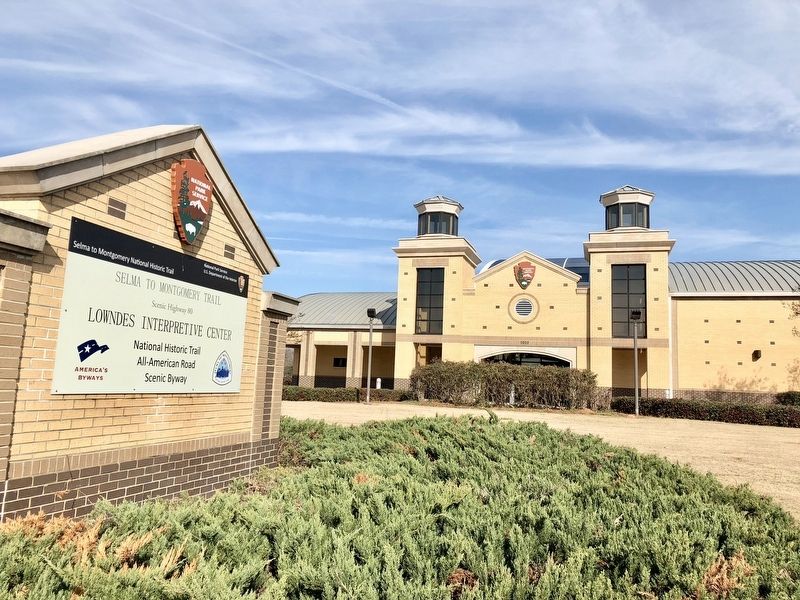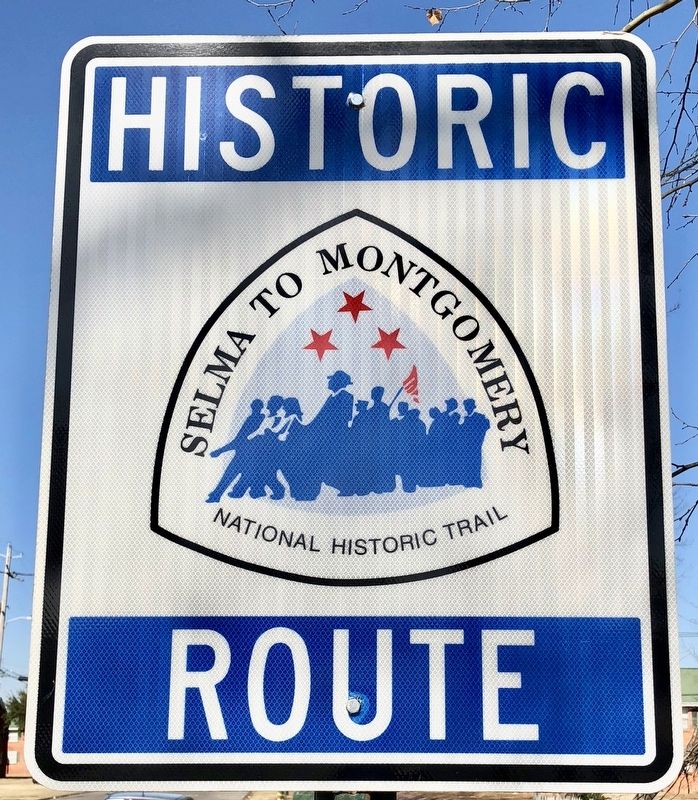White Hall in Lowndes County, Alabama — The American South (East South Central)
No Isolated Incident
— Selma to Montgomery National Historic Trail —
In 1960, 257 black sharecroppers in Fayette County, Tennessee, were evicted from their houses and blacklisted by white merchants after they tried to register. These families suffered a hard existence living in dirt-floors tents for nearly two years. Mary Williams recalls hearing a loud noise as she and her baby and husband slept in their Fayette County tent. "I jumped up, Earlie didn't realize he was shot at first. When he moved across the bed, there was a stream of blood on the sheet...it went through his arm. Another inch and it could have been his head, or the baby, or me."
There were four tents and four families in our tent city....It was so cold when we moved in....I gave birth to one of my children that night and the dog outside froze to death. We were there a year before we moved out.
Tent city families of Fayette County, Tennessee did their best to carry on with life. The injustices the residents experienced helped attract national attention and resulted in the first federal lawsuit brought under the 1957 Civil Rights Act.
In 1966 this family was one of several living in tents after being evicted in Greene County, Alabama. The young woman (center) went into labor four days after this photograph was taken; she was turned away by a local white hospital and bled to death.
Erected 2015 by the National Park Service, Department of the Interior.
Topics. This historical marker is listed in these topic lists: African Americans • Civil Rights. A significant historical year for this entry is 1960.
Location. 32° 16.213′ N, 86° 43.581′ W. Marker is in White Hall, Alabama, in Lowndes County. Marker can be reached from U.S. 80 west of White Hall Road. Located within the National Park Service Lowndes Interpretive Center. Touch for map. Marker is at or near this postal address: 7002 US-80, Hayneville AL 36040, United States of America. Touch for directions.
Other nearby markers. At least 8 other markers are within 2 miles of this marker, measured as the crow flies. A Price Paid (a few steps from this marker); Marchers, Supporters, Hecklers (within shouting distance of this marker); Day Two (within shouting distance of this marker); You Gotta Move (about 300 feet away, measured in a direct line); After the March—Tent City (about 500 feet away); It Started in Selma (about 500 feet away); Holy Ground Battlefield (about 500 feet away); Campsite 2 (approx. 1.2 miles away). Touch for a list and map of all markers in White Hall.
Regarding No Isolated Incident. This National Park Service site is dedicated to those who peacefully marched 54 miles from Selma to the state capitol of Montgomery in order to gain the right to vote. This significant contribution to the trail serves as a reservoir of information about the unfortunate, yet significant, events that occurred in Lowndes County during the march. The museum exhibits interpret various events, including the confrontation of seminarian Jonathan Daniels; the slaying of Viola Liuzzo, a white woman who assisted the marchers by transporting them to Selma; and the establishment of Tent City, made up of temporary dwellings filled with cots, heaters, food and water that benefited families dislodged by white landowners in Lowndes County.
The $10 million structure was made possible through collaborative efforts between the National Park Service, the Federal Highway Administration and the Alabama Department of Transportation. There are no entrance fees required to visit this center.
Credits. This page was last revised on November 9, 2021. It was originally submitted on January 7, 2018, by Mark Hilton of Montgomery, Alabama. This page has been viewed 623 times since then and 117 times this year. Photos: 1, 2, 3, 4. submitted on January 7, 2018, by Mark Hilton of Montgomery, Alabama.



